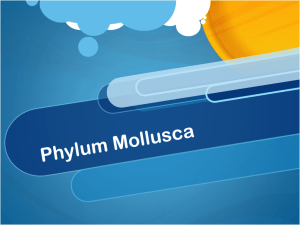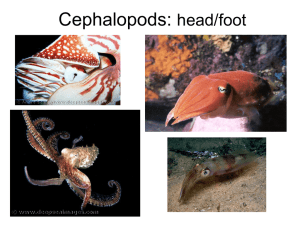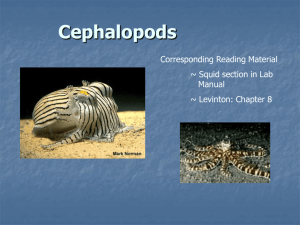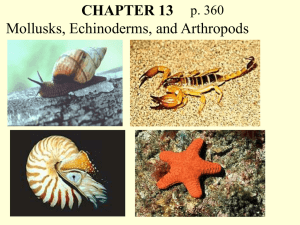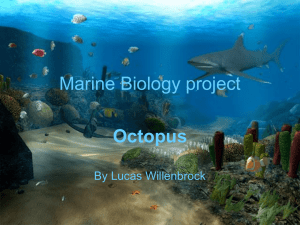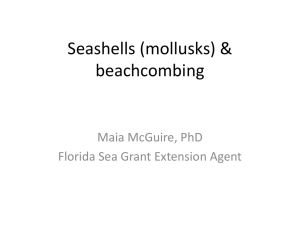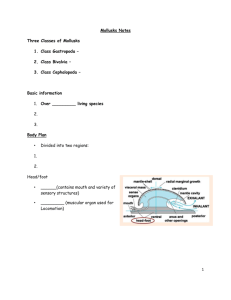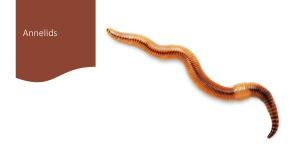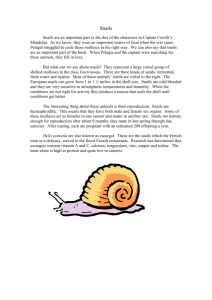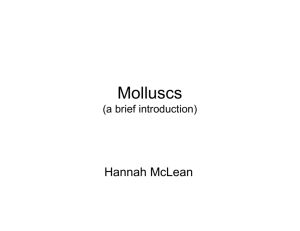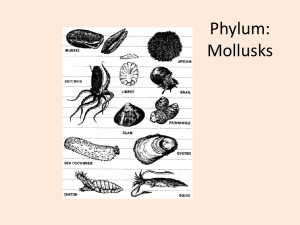PHYLUM MOLLUSCA
advertisement
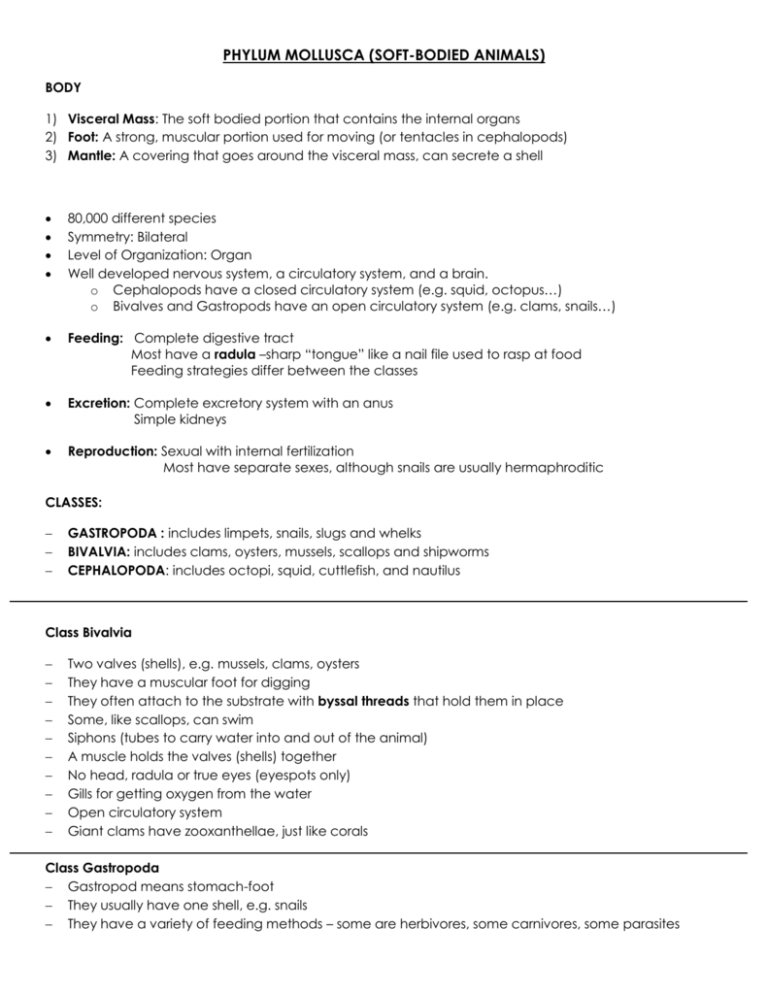
PHYLUM MOLLUSCA (SOFT-BODIED ANIMALS) BODY 1) Visceral Mass: The soft bodied portion that contains the internal organs 2) Foot: A strong, muscular portion used for moving (or tentacles in cephalopods) 3) Mantle: A covering that goes around the visceral mass, can secrete a shell 80,000 different species Symmetry: Bilateral Level of Organization: Organ Well developed nervous system, a circulatory system, and a brain. o Cephalopods have a closed circulatory system (e.g. squid, octopus…) o Bivalves and Gastropods have an open circulatory system (e.g. clams, snails…) Feeding: Complete digestive tract Most have a radula –sharp “tongue” like a nail file used to rasp at food Feeding strategies differ between the classes Excretion: Complete excretory system with an anus Simple kidneys Reproduction: Sexual with internal fertilization Most have separate sexes, although snails are usually hermaphroditic CLASSES: GASTROPODA : includes limpets, snails, slugs and whelks BIVALVIA: includes clams, oysters, mussels, scallops and shipworms CEPHALOPODA: includes octopi, squid, cuttlefish, and nautilus Class Bivalvia Two valves (shells), e.g. mussels, clams, oysters They have a muscular foot for digging They often attach to the substrate with byssal threads that hold them in place Some, like scallops, can swim Siphons (tubes to carry water into and out of the animal) A muscle holds the valves (shells) together No head, radula or true eyes (eyespots only) Gills for getting oxygen from the water Open circulatory system Giant clams have zooxanthellae, just like corals Class Gastropoda Gastropod means stomach-foot They usually have one shell, e.g. snails They have a variety of feeding methods – some are herbivores, some carnivores, some parasites Some cone snails inject a venom that can be fatal to humans Snails have a hard “door” called an operculum Internal fertilization and are often hermaphrodites Use a radula for feeding Also in Class Gastropoda… the Nudibranch! Nudibranch means “naked gills” They have evolved to have no shell Toxic and have bright beautiful colors as a warning to predators The feathery parts on their backs are their gills Two rhinophores that “taste” the water around them to sense their environment Reasons why Nudibranchs are so cool… 5. They are amazing colours… 4. They can eat toxic sponges without being harmed, but can transfer the toxin to a predator if bitten 3. Hermaphroditic nudibranchs battle to be the one to inject the other with sperm. 2. They can eat nematocysts from corals and anemones without getting stung. The next thing that touches them gets the sting! 1. A nudibranch can eat algae and take the chloroplasts into its own body. It can then perform PHOTOSYNTHESIS! Class Cephalopoda Their name means “head – foot” E.g. Octopus, squid, cuttlefish They have 8 (or more) arms They can push a jet of water out their siphon, allowing them to move quickly An ink sac allows them to eject ink as decoy The Nautilus has a shell with chambers that allows it to change depth easily (they are great hunters) Many cephalopods have no shell o Squid and cuttlefish have a hard part inside o Octopus have no hard parts except for their mouth Cephalopods have a very well developed nervous system o nerves can carry messages TEN times faster than in humans Their eye is complex and has 180 degree vision out of the sides of their heads They have a developed brain and can solve problems Mouth is called a beak They have internal fertilization and have separate sexes o male has a special tentacle used to put sperm packets inside the female o Squid mate in a big group o Female octopus lay thousands of eggs in a cave and guards them until she dies Octopus Many have photophores that allow them to produce light Most also have chromatophores that allow them to change color to match their background
